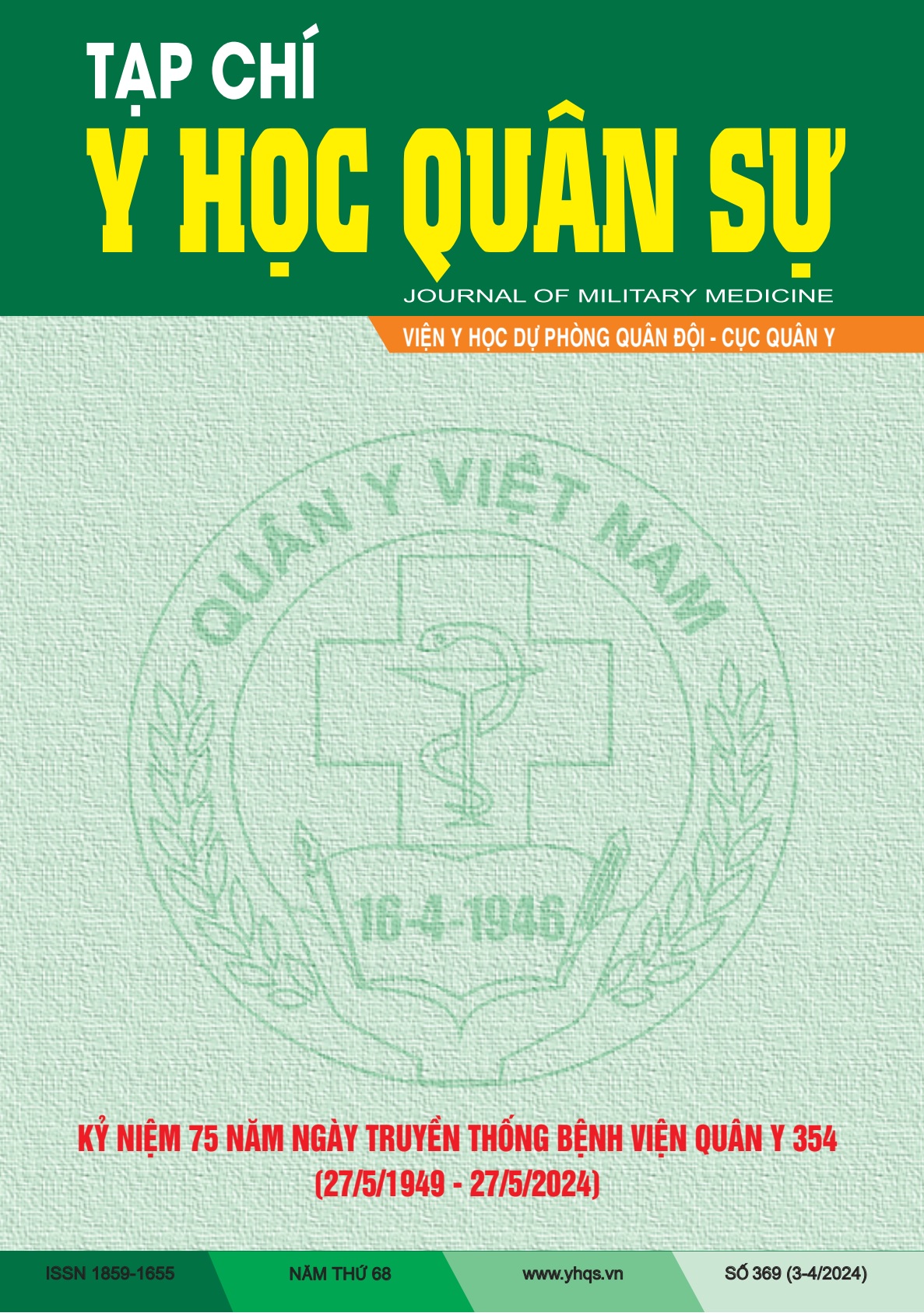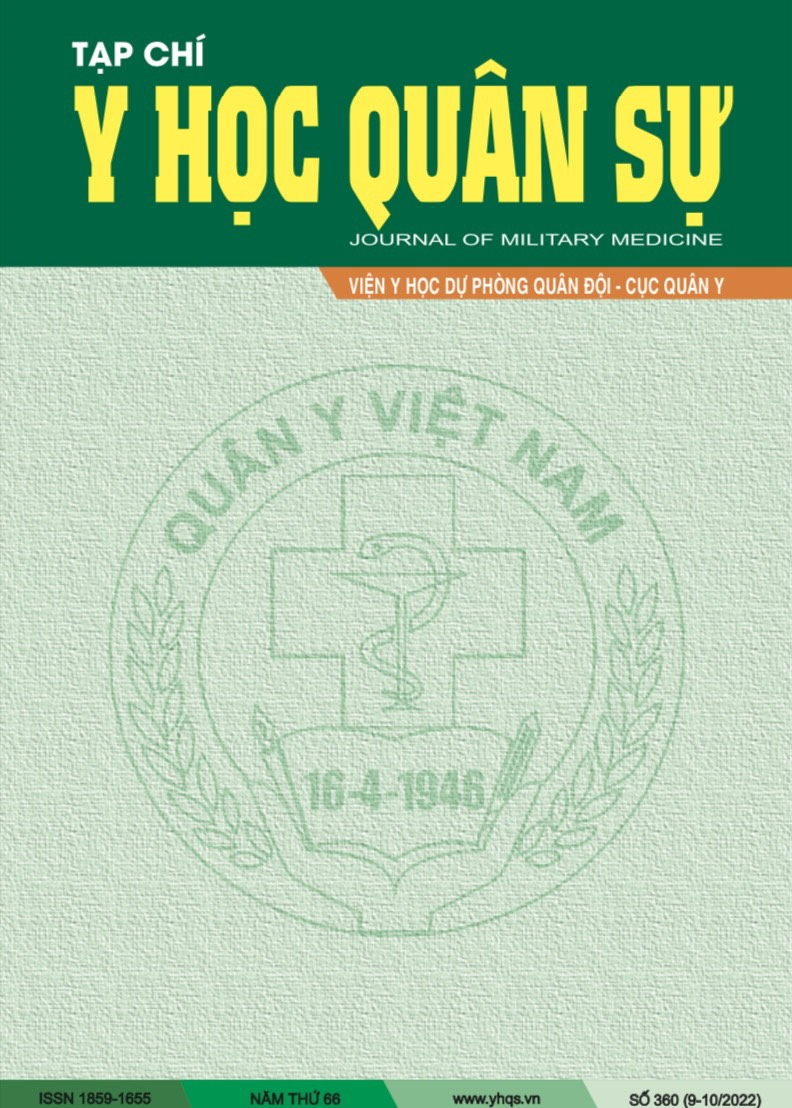HOẠT TÍNH ĐỐI KHÁNG VỚI VI SINH VẬT GÂY BỆNH CHO NGƯỜI CỦA CHỦNG XẠ KHUẨN Streptomyces MIP_GN36 PHÂN LẬP TỪ ĐẤT VÙNG RỄ CÂY GỪNG
DOI:
https://doi.org/10.59459/1859-1655/JMM.400Từ khóa:
Đối kháng, chất kháng sinh, MIP_GN36, StreptomycesTóm tắt
Mục tiêu: Sàng lọc chủng xạ khuẩn từ đất vùng rễ cây Gừng (Zingiber officinale) nhằm tìm kiếm các chất có hoạt tính kháng vi khuẩn, kháng nấm và hoạt tính sinh học tiềm năng, làm cơ sở cho những nghiên cứu tiếp theo.
Đối tượng, phương pháp: Thử nghiệm hoạt tính đối kháng của 8 chủng xạ khuẩn (Streptomyces MIP_GN34, GN35, GN36, GN37, GN38, GN39, GN40, GN41) phân lập từ đất vùng rễ cây Gừng (khu vực huyện Khoái Châu, tỉnh Hưng Yên) với 2 chủng vi sinh vật gây bệnh (Bacillus cereus ATCC11778 và Candida albican ATCC12031) bằng phương pháp khuếch tán đĩa thạch.
Kết quả: Streptomyces MIP_GN36 có hoạt tính đối kháng với 2 chủng vi sinh vật gây bệnh Bacillus cereus ATCC11778 và Candida albican ATCC12031 với đường kính vòng vô khuẩn lần lượt là 13 mm và 10,5 mm ± 2 mm, có khả năng sinh trưởng ở dải nhiệt độ từ 25-50ºC, pH 6,5-7,5. Trên môi trường ISP4, khuẩn lạc có màu trắng ngà, bào tử xuất hiện sau 5-7 ngày nuôi cấy. MIP_GN36 sử dụng các nguồn carbon là tinh bột tan, rỉ đường; nguồn ni tơ là cao nấm men, pepton. Khảo sát các cụm gen liên quan đến quá trình sinh tổng hợp kháng sinh, Streptomyces MIP_GN36 mang gen mã hóa enzyme PKSII. Xác định đặc điểm hình thái kết hợp với trình tự 16S rRNA, MIP_GN36 có độ tương đồng 99,54% với loài Streptomyces thermocarboxydus trên Genbank, do đó được đặt tên là Streptomyces thermocarboxydus MIP_GN36.
Tài liệu tham khảo
Donadio S, Maffioli S, Monciardini P, Sosio M, Jabes D (2010), “Antibiotic discovery in the twenty-first century: current trends and future perspectives”, J Antibiot (Tokyo), 63: 423-430.
Jan Hudzicki (2009), “Kirby-Bauer Disk Diffusion Susceptibility Test Protocol”, American Society for Microbiology.
Nguyễn Lân Dũng (dịch, 1983), Thực tập vi sinh vật học, Nhà xuất bản Khoa học và Kĩ thuật, Hà Nội, tr. 73-81.
Tresner H. D, Bergey E.J (1963), System of Color Wheels for Streptomycete Taxonomy, Appl. Microbiol, 11: 8.
Nguyễn Văn Cách (2004), Công nghệ lên men các chất kháng sinh, Nhà xuất bản Khoa học và kĩ thuật, Hà Nội.
Mariana Avalos et al (2014), “Isolation and characterization of antibiotic produced by Streptomyces K-155”, Biomedical and Biology, 25:5.
Sreenivasa Nayaka et al. (2020), “A potential bioactive secondary metabolites and antimicrobiao efficancy of Streptomyces thermocarboxydus strain KSA-2 isolated from Kali river Karwar”, Current Research in Microbiology and Infection, 1 (1): 5-13.
Al-Ansari et al (2020), “Optimization of medium components for the production of antimicrobial and anticancer secondary metabolites from Streptomyces sp. AS11 isolated from the marine environment”, Science, 32 (3): 1993-1998.
Nisha Selvaraij et al (2023), “Statistical optimization of media components for antibiotic production in Streptomyces sp. CMSTAAHAL-3”, Electronic Jounal of Biotechnology, 65: 1-13.
I son Ng. et al (2013), “Daptomycin antibiotic production processes in fed-batch fermentation by Streptomyces roseosporus NRRL 11379 with precursor effect and medium optimization”, Bioprocess and Biosystems Engineering, 37 (3).
Hong-Jin Ni et al (2021), Optimization of fermentation conditions and medium compositions for the production of chrysomycin a by a marine-derived strain Streptomyces sp. 891, Prep Biochem Biotechnol, 51 (10): 998-1003.
W. Khangkhachit et al (2021), “Production of thermostable xylanase using Streptomyces thermocarboxydus ME742 and application in enzymatic conversion of xylan from oil palm empty fruit bunch to xylooligosaccharides”, Biocatalisis and Agricultural Biotechnology, 37.
Kim S.B et al (1998), “Streptomyces thermocarboxydovorans sp. nov. and Streptomyces thermocarboxydus sp. nov., two moderateli thermophilic carboxydotrophic species from soil”, International Journal of Systematic Bacteriology, 48 (1): 59-68.
Tải xuống
Đã Xuất bản
Cách trích dẫn
Số
Chuyên mục
Chấp nhận đăng 17-04-2024
Ngày xuất bản 08-05-2024



